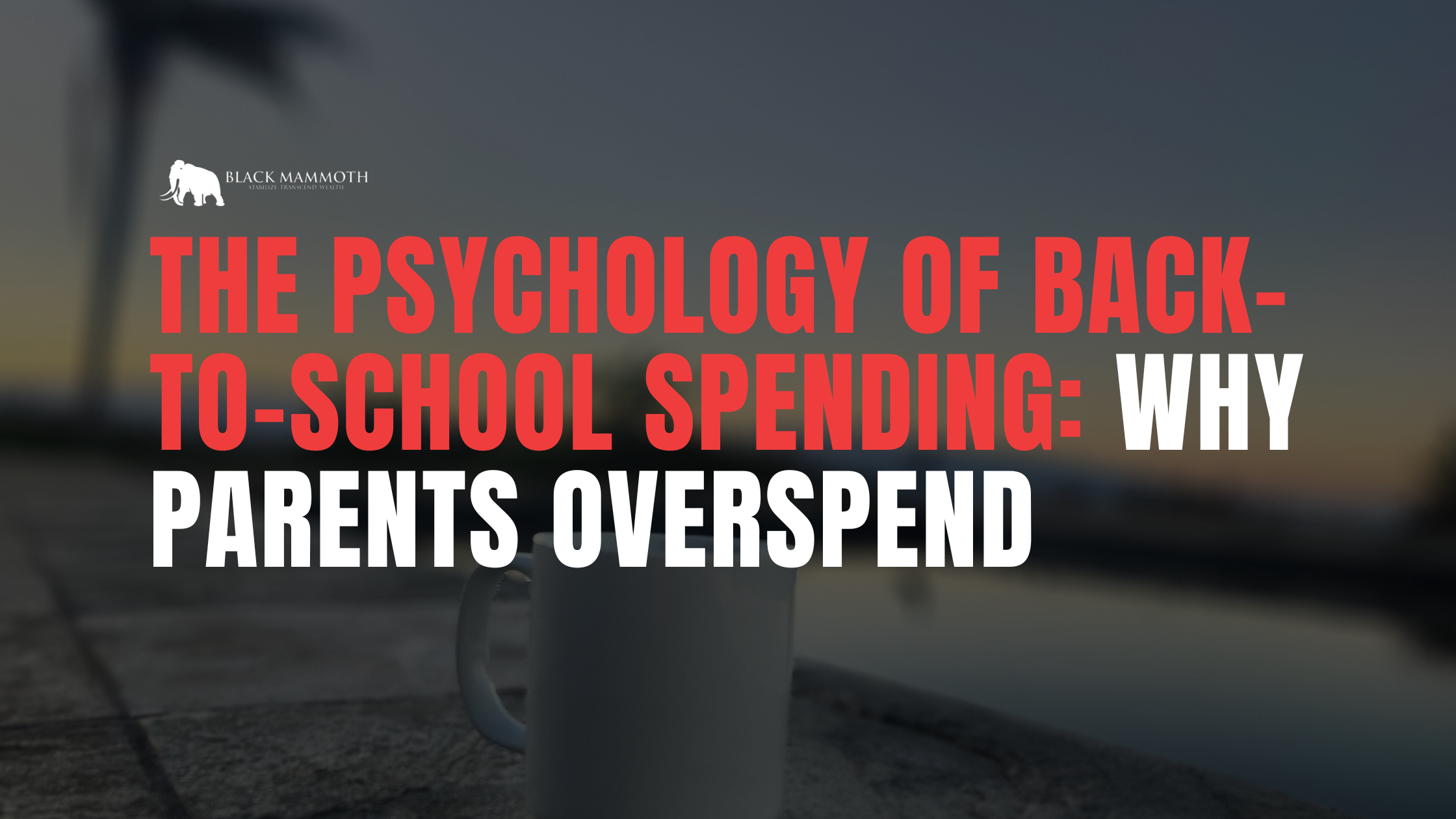The Psychology of Back-to-School Spending: Why Parents Overspend
Let’s be real. Every August, stores go full-on battlefield mode with bright sales signs, “limited-time” deals, and your kid begging for the newest shoes, backpack, or gadget. You walk in for pencils, and somehow walk out with $350 worth of “essentials.” Sound familiar?
This isn’t just about poor planning or bad budgeting—it’s psychology at work. Retailers know how to tug at emotions, and parents (even the most disciplined ones) fall into patterns that make back-to-school one of the most expensive—and emotionally draining—seasons of the year.
Let’s break down why parents overspend, what mental traps to watch for, and how you can flip the script this fall.
1. The Guilt Factor: “I Don’t Want My Kid to Feel Left Out”
The psychology:
Parents spend because they don’t want their child to be the one with off-brand shoes, a cheap backpack, or fewer supplies. That fear of your kid being “the odd one out” can override rational decision-making. It’s love—but it’s also guilt-driven spending.
Action Steps:
Have a conversation with your child about needs vs. wants. Frame it as teamwork, not deprivation.
Decide on one “special” splurge item together (maybe the sneakers, maybe the backpack). Let them have input, but set boundaries.
Teach your kids early that confidence isn’t tied to a brand label—it’s tied to how they carry themselves.
2. The “New Year” Effect
The psychology:
For kids, back-to-school feels like New Year’s Eve. New clothes, fresh supplies, new opportunities—it feels like a clean slate. Parents often feed into this by overspending as if they’re “investing” in a better start.
Action Steps:
Treat the school year like a marathon, not a sprint. Buy only what’s needed for the first month. Supplies can be spread out.
Write down your kid’s current wardrobe and supplies before shopping. You’ll find plenty of usable items hiding in drawers.
Start a “mid-semester refresh” fund so you don’t feel pressured to buy everything in August.
3. Peer Pressure—For Parents
The psychology:
It’s not just the kids. Parents feel competitive too. You see other moms or dads posting their perfectly dressed kids with new tablets, shoes, and lunchboxes on Instagram, and suddenly you’re swiping your card just to keep up.
Action Steps:
Mute social media accounts during back-to-school shopping if they trigger comparison.
Shift perspective: Your financial discipline is the flex. Teaching your kid money skills > teaching them how to keep up with others.
Build a support system of like-minded parents who value budgeting and discipline. Normalize saying, “We didn’t need all that this year.”
4. Retailer Manipulation
The psychology:
Back-to-school season is a retailer’s dream. Sales “deadlines,” buy-one-get-one offers, and “limited edition” products create urgency. Parents fall into scarcity bias—the fear that waiting means missing out.
Action Steps:
Don’t buy into fake scarcity. Most sales recycle every few weeks.
Research pricing in advance. Apps like Honey or CamelCamelCamel track real price history.
Make a shopping list before you walk into Target or open Amazon. Stick to it—seriously.
5. The Emotional High of “Providing”
The psychology:
There’s a dopamine hit in seeing your kid smile when they get the “cool” item they wanted. Parents chase that feeling, and the swipe becomes less about need and more about emotional payoff.
Action Steps:
Swap instant gratification for long-term payoff: Create a “wish list” with your kid and review it monthly. Often, they forget half of it.
Channel generosity differently: Spend on experiences (family outings, learning activities) that create deeper memories than stuff.
Ask yourself before buying: Am I buying this for them, or for how I want to feel as a parent?
6. Forgetting the Bigger Picture
The psychology:
In the rush of back-to-school, parents often ignore long-term goals—emergency funds, debt payoff, retirement—and prioritize temporary “wins” like a fancy lunchbox or $200 headphones.
Action Steps:
Set a seasonal budget: Decide on a total amount before shopping, and reverse-engineer the list to fit.
Use back-to-school as a teaching opportunity: “Here’s our family budget, here’s how we prioritize.”
Redirect overspending temptations into a future goal—family trip fund, holiday savings, or debt snowball.
7. Emotional Exhaustion = Spending
The psychology:
By late August, parents are burned out. Between camps, schedules, and prepping for the school year, decision fatigue kicks in. And when you’re mentally exhausted, your brain defaults to the easiest path—swiping the card.
Action Steps:
Shop in short bursts instead of marathon days. Two focused trips beat one overwhelming haul.
Pre-shop online to create a cart—then wait 24 hours before purchasing. Often, you’ll delete half.
Delegate: split the list with your partner or older child to cut decision fatigue in half.
Pulling It All Together: The Back-to-School Reset
The truth is, overspending at back-to-school isn’t really about money—it’s about emotions: guilt, comparison, exhaustion, love, and wanting your kids to feel secure. Retailers know it. Social media knows it. And if you’re not careful, your bank account pays the price.
But here’s the good news—you can reset. With awareness, boundaries, and a plan, you can turn back-to-school into a teaching moment, a financial win, and even a chance to strengthen your family values.
Resources You Can Use Today
Honey (browser extension) – Automatically finds and applies coupon codes.
Mint – Free budgeting app that categorizes and tracks spending.
National Retail Federation – Annual data on back-to-school costs and trends.
CamelCamelCamel – Price tracker for Amazon products to beat fake “sales.”
Take Back Control This School Year
Back-to-school season doesn’t have to wreck your budget year after year. At Black Mammoth, we take the psychology of money seriously—and we help families like yours put systems in place that actually work.
A Black Mammoth Power Hour is your chance to get one-on-one, no-BS guidance. We’ll cut through the guilt, the comparison, and the chaos, and build a financial plan that’s rooted in your family’s values and goals.
Book your Power Hour now and start the school year with clarity, confidence, and control.

